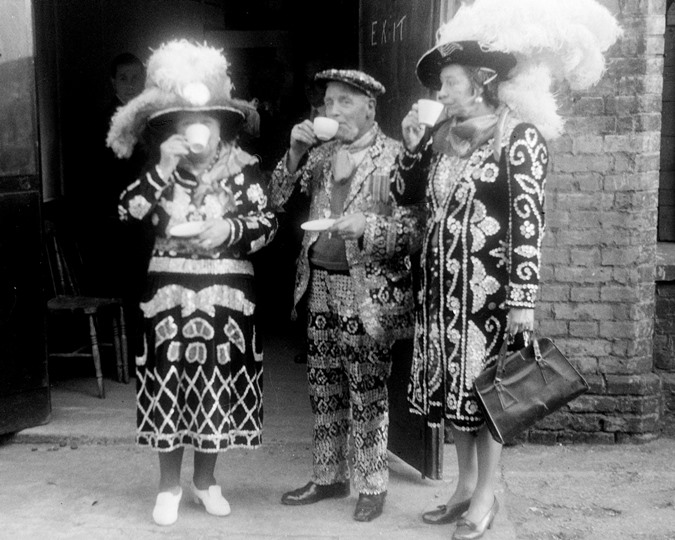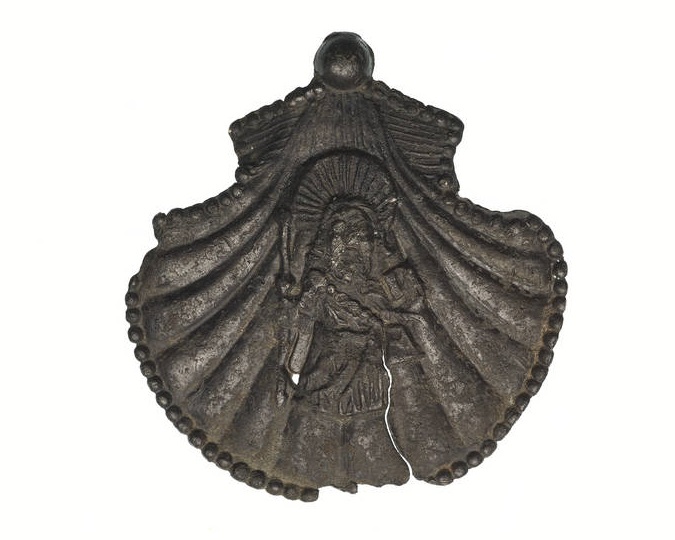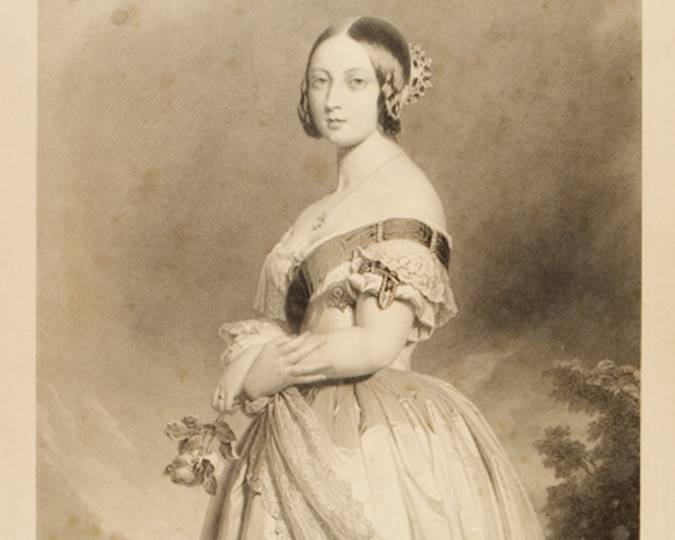To what extent does London appear in films based on Charles Dickens’ books? What does David Lean’s use of St Paul’s dome in his 1948 adaptation of Oliver Twist say about the city’s landscape? And does his imagery really take inspiration from the French draughtsman Gustave Doré? Read on to explore the connection between Dickens, Doré and London.
It’s sometimes said that London is as much a character of Dickens’ novels as Oliver Twist, Scrooge or any of the other figures he describes. But to what extent does the city appear in films based on Charles Dickens’ books? How do we recognise London and how does it feature in a film such as David Lean’s classic 1948 adaptation of Oliver Twist?
There is a recurring scene in Lean’s film, where the camera offers a panorama of London’s rooftops dominated by the dome of St Paul’s Cathedral. The narrow streets, steeply angled roofs and gangly buildings connected by footbridges, over which tiny figures scurry, present a familiar vision of 19th-century London as a labyrinth. Beyond them, almost belonging to another world, the cathedral’s massive dome dominates the horizon, nearly blotting out the night sky altogether.

The similarities are uncanny
(left) St Paul's viewed from the Barclay, Perkins and Company brewery in Park Street, Southwark, wood engraving, 1872, by Gustave Doré. (ID no.: NN23607(130)); and (right) the view across the rooftops in Oliver Twist, 1948, directed by David Lean. (Oliver Twist 1948, David Lean/Cineguild)
How far does this vision of 19th-century London stray from the real city Dickens knew? One likely source seems to have been the work of the French draughtsman, Gustave Doré. Doré spent time in London around 1870 making drawings for his book London: A Pilgrimage (1872). These illustrations, particularly those of the poorer districts, are amongst the most atmospheric depictions of London to emerge from the 19th century, presenting a vision of the city as a claustrophobic industrial metropolis. Streets are impossibly crowded with people, animals and traffic; densely packed housing stretches away in unrelieved lines beneath colossal railway viaducts; and the ever-present poor throng doorways, pavements and bridges.
Doré absorbed the atmosphere of the city at first hand, walking its streets with journalist William Blanchard Jerrold, and often, when in the East End, in the company of plainclothes police. Yet, he disliked sketching in public — meaning, the drawings he made were often inaccurate, however brilliantly they conveyed the character and atmosphere of a place.
That Lean was channelling Doré in his evocation of 19th-century London is most strongly suggested by a comparing that recurring shot of St Paul’s with a plate from London: A Pilgrimage. In St Paul's viewed from the Barclay, Perkins and Company brewery in Park Street, Southwark (p.131), Doré shows the cathedral as seen from the closely packed warehouse roofs of Southwark’s Bankside. Iron footbridges span the narrow alleyways between the close-packed warehouse buildings. And, on the bridge in the immediate foreground, two tiny figures make their way from one side to the other, much as do Oliver and the Dodger in Lean’s iconic shot. As in the film, the dome of St Paul’s seems like to hover like something from another world, its scale and elevation impossibly exaggerated.
To see how both Doré and Lean make the cathedral dominate the cityscape, John and Alfred Bool’s photograph of the Oxford Arms, taken in 1875, gives us a similar view of 19th-century London. The Oxford Arms was an old coaching inn that stood near Amen Corner, literally a stone’s throw from St Paul’s. Beyond its chimneystacks, the architect Sir Christopher Wren’s dome is instantly recognisable, but it is not the colossal structure envisioned by either Doré, or Lean.
Lean uses St Paul’s as a visual reference to locate the action clearly in London. But he uses more subtle means during the scene in which Oliver first arrives in the capital. In the novel, Oliver meets the Artful Dodger in Barnet, which even today is on the outskirts of London. Dickens then records the route taken by the two boys, down through Islington, into Clerkenwell, down Saffron Hill, and finally to Fagin’s house near Field Lane.

(top) Oliver Twist comes to London, and the chaos of Smithfield market. (Oliver Twist 1948, David Lean/Cineguild)
Lean omits all of this. Instead, he gives us an evolving series of images that convey the tumultuous energy of the great city. He jumps from a scene in which Oliver runs up an empty hillside to one in which the boy is dwarfed and jostled by figures so large that their heads are out of shot, and so numerous they entirely fill the frame.
A bewildering blare of noises accompanies this scene: people screaming and shouting, trumpets squawking, horses neighing, sheep bleating, and cows mooing. Clearly, this is London and, more specifically, although it is not named, it is Smithfield: the animals alone tell us so. (This is around 33 minutes into the movie)
This scene, or something like it, appears much further into the novel, when Dickens describes Smithfield at the beginning of Chapter 21. Accompanied by Bill Sikes, Oliver walks “into Smithfield, from which latter place arose a tumult of discordant sounds that filled Oliver Twist with surprise and amazement”. Dickens then describes the market at length, in a dizzying series of images that prefigure Lean’s own montage:
“Countrymen, butchers, … boys, thieves, idlers and vagabonds of every low grade … the whistling of drovers, the barking of dogs, the plunging and bellowing of beasts … the cries of hawkers, the shouts, oaths and quarrelling on all sides, … rendered it a stunning and bewildering scene which quite confounded the senses.”
It may be that Lean got the idea for this scene from the Russian filmmaker, Sergei Eisenstein, who wrote an unrealised treatment of Oliver Twist. In his adaptation, Eisenstein broke down Dickens’ text into a collage of images, much as Lean did for his own film. Whatever its origins, this scene in Leans’ film successfully conveys the idea of London as a place of restless, overwhelming energy and the smothering density of its inhabitants. This again recalls Doré, especially images like A block in the street or A City thoroughfare.
In contrast, 19th-century photography had a hard time capturing such fleeting sensory impressions, due to long exposure times, though Henry Dixon’s 1882 shot of Aldgate manages to convey the swirl of horse-drawn traffic along a City thoroughfare. And one anonymous photograph of London Bridge, from around the same date, shows a density of traffic which easily rivals anything by Doré.
After their meeting at Smithfield Market, Dodger takes Oliver back to Fagin’s house. As one frame dissolves into the other, Lean gives us our first view of St Paul’s, framed at the end of a vista between ramshackle houses. If we were in any doubt, we now know for sure that we are in London.
Lean’s use of St Paul’s to locate the action of the film in London almost certainly reflects the fact that the cathedral was the only significant mid-19th century feature of the city a 20th-century audience would recognise. Other icons of the skyline appeared much later than the 1830s setting of Oliver Twist. The Houses of Parliament, for instance — possibly the building most often used by filmmakers to establish a London setting — did not open until 1870, although most of the construction was completed by 1860. Other than these structures, London remained an essentially low-rise city until well into the 20th century. Pierre Prévost’s panorama of London gives us probably the best overall impression of the mid-19th century metropolis Dickens was writing about. It gives today’s viewer few easily recognisable landmarks. We might almost be looking at another city, were it not for that familiar, pale dome on the horizon.
Explore the Museum of London’s collection of Gustave Doré’s works here.
Header images: St Paul's Cathedral and Queen Victoria Street from Blackfriar's. One of many photographs taken by George Reid who photographed the streets and buildings of London, and the activities in them, in the 1920s and 1930s. (ID no.: 003238); Doré’s Ludgate Hill (ID no.: 766695) and Playscript for a serio-comic burletta adaptation of Charles Dickens's novel Oliver Twist adapted by George Almar (ID no.: 010320).
















